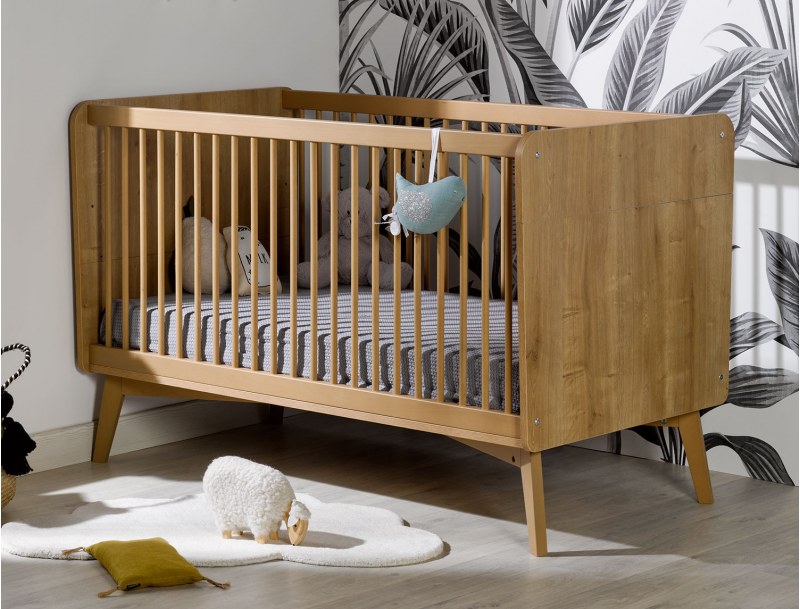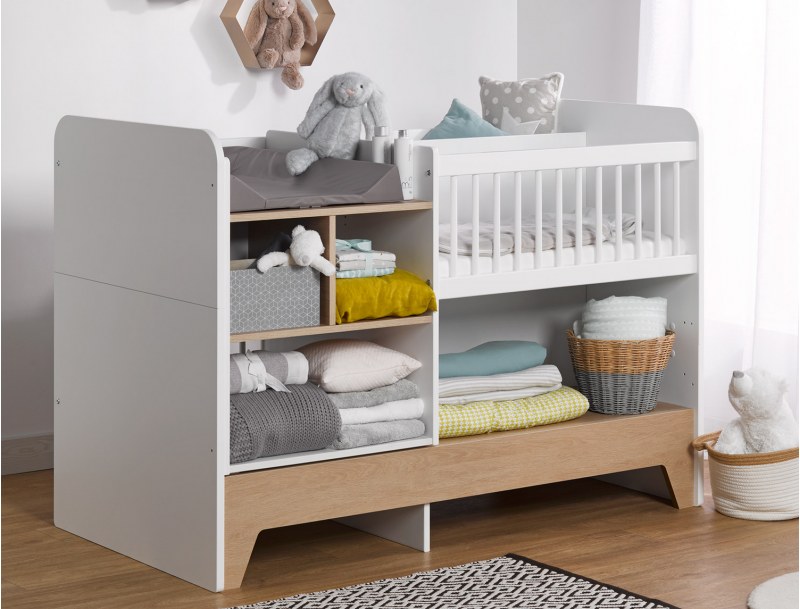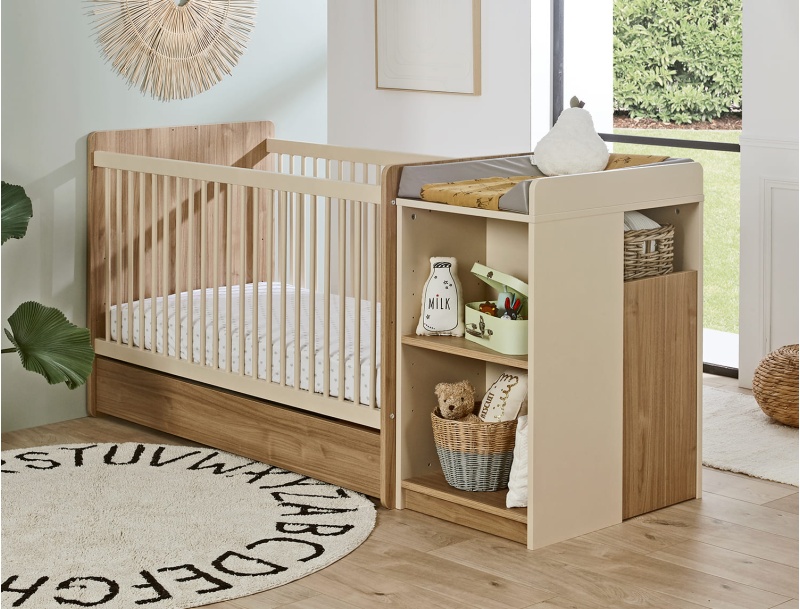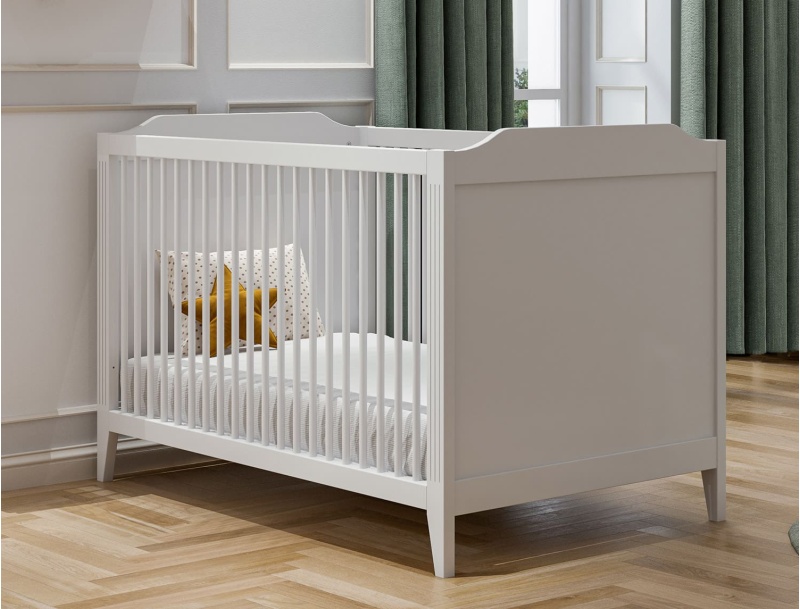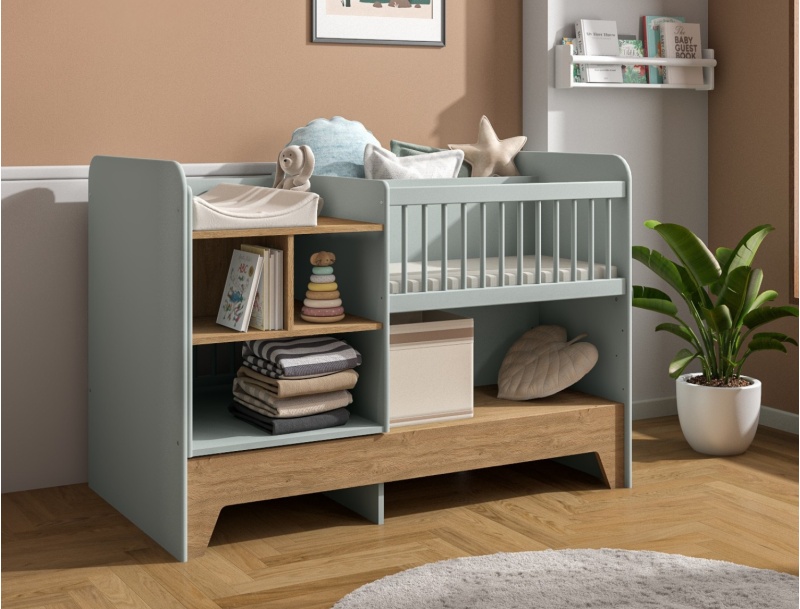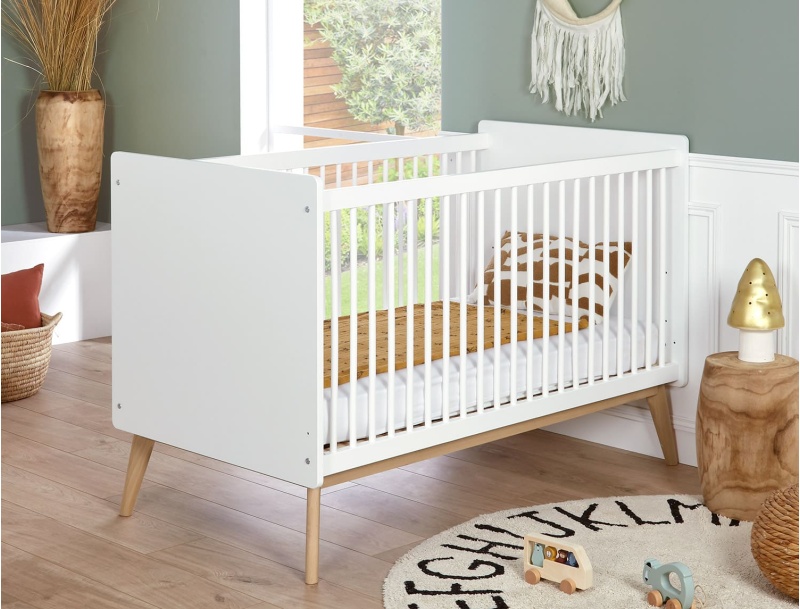How to help baby sleep peacefully in their bed?

Getting baby to sleep in their crib
It is sometimes difficult for new parents to get their baby to sleep in their own bed, but rest assured, there are solutions! You may have tried several methods without success, and fatigue is starting to set in. However, with a little patience and the right tools, you can establish a soothing routine for your child to sleep peacefully in their baby crib.
In this guide, we will explore effective and practical strategies that will not only help your infant find sleep more easily, but also establish an environment conducive to rest for you and your little one. If you're ready to master the art of peaceful bedtime, keep reading!
Creating a peaceful sleep environment
Optimizing the environment
The environment plays a crucial role in the quality of your baby's sleep. A room that is too bright or noisy can disrupt their ability to fall asleep. To promote a calm atmosphere, opt for dimmed lighting, ideal for creating a sense of security without fully waking your child during nighttime awakenings. Another essential element is temperature control: a room that is too hot or too cold will also disturb the baby's sleep.
Maintain a soothing atmosphere by reducing visual and auditory distractions. You may consider using a white noise machine, which helps mask external sounds and recreate an environment similar to that experienced in the womb. Finally, ensure that all accessories in the crib are secure: avoid bulky toys or anything that could hinder your little one's movement.
Regularly check the safety of the crib: no thick blankets or pillows to avoid any risk of suffocation. A tidy room with a soft ambiance promotes not only physical but also psychological comfort, both for you and your child.


Suitable bedding for baby's comfort
Comfort is paramount when it comes to helping your baby sleep peacefully in their own bed. Choose a firm mattress, it's essential to ensure their safety during the night. Avoid soft mattresses that can lead to suffocation risks and prefer breathable bedding adapted to the specific needs of infants. For example, opt for one of our baby mattresses made of natural fibers.
To keep baby warm safely, favor a sleep sack adapted to their size rather than a classic blanket. The pajamas should also be comfortable – neither too tight nor too loose – so that your child can move freely without feeling oppressed.
Finally, adjust the bedding according to the seasons: in summer, prefer light materials like cotton while in winter, opt for something a little thicker but still breathable to avoid overheating during sleep.
Establishing a comfortable bedtime routine
The importance of consistency
Consistency is key when it comes to establishing an effective bedtime routine. By setting specific times to put your baby to bed each day, you allow them to anticipate this crucial moment and thus facilitate falling asleep. A gentle transition between daytime and nighttime activities also helps a lot.
Regularity creates a reassuring framework where your child knows exactly what will happen: bath, pajamas, cuddle, then being put to bed in their own baby crib. This stability helps reduce anxiety, both for you and for them.
Be persistent! It may take several weeks before this routine becomes natural for your little one. But with time and lots of love, it will eventually strengthen their sense of security at bedtime.
Incorporating soothing rituals
Rituals are an integral part of a good nighttime routine. Why not start by reading a short story? This calms the baby's agitated mind before sleep while strengthening the emotional bond between you two. Soft lullabies, sung tenderly just before bedtime, can also help create this atmosphere conducive to rest.
Another beneficial ritual is gentle massage: a few minutes are enough to release tensions accumulated during the day and promote a calm state before they fall deeply asleep in their cradle or baby crib.
Cuddles are essential; however, be careful not to prolong these moments beyond what is reasonable so that they do not interfere with the ultimate step of falling asleep independently in their own personal space.
Understanding baby's sleep cycle
Signs of fatigue and ideal timing
Recognizing early signs of fatigue in an infant is essential for determining when they are ready to go to bed. Frequent yawning, rubbing eyes, or irritability are clear indicators that your baby needs rest.
Knowing how to recognize these signals also allows you to adjust your routines according to the ideal time to take them to their room/crib to maximize their chances of falling asleep quickly. Taking into account the natural rhythm plays a fundamental role here!
Finally, respecting these regular cycles allows not only the child but also parents exhausted by their days filled with intense (and often unpredictable) activities to gradually regain their family balance.
Sleep phases and transition
The sleep cycle in babies involves several distinct phases: light phase then deeper before returning to partial/total wakefulness possible during the same night! Understanding this will help anticipate some unpredictable night awakenings.
To better understand baby, magicmaman details baby's sleep month by month.













 Choosing the right baby blanket dimensions according to season and age
Choosing the right baby blanket dimensions according to season and age
 How to attach a headboard (with or without drilling): quick and effective soluti
How to attach a headboard (with or without drilling): quick and effective soluti
 Waterproof sheet or mattress protector: the best solution by age group
Waterproof sheet or mattress protector: the best solution by age group
 27 Original, Useful, and Trendy Christmas Ideas for Teens 2025
27 Original, Useful, and Trendy Christmas Ideas for Teens 2025
 Christmas Activities for Baby: Creative Ideas for Home & Daycare
Christmas Activities for Baby: Creative Ideas for Home & Daycare
